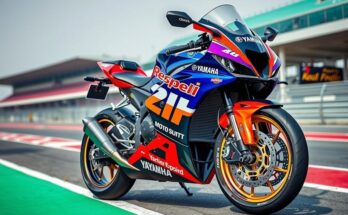Gianpiero Lambiase, Max Verstappen’s race engineer, employed a ‘subservient’ approach during the Brazilian Grand Prix, which was vital in securing Verstappen’s win from 17th on the grid. Their communication style adapted to the race’s high-pressure conditions, focusing on damage limitation against rival Lando Norris. Key moments in the race reinforced the importance of teamwork in achieving a successful strategy.
Gianpiero Lambiase, the race engineer for Max Verstappen, has discussed the significance of adopting a “subservient” role to facilitate the Dutch driver’s success during the Brazilian Grand Prix last season. The dynamic between driver and engineer plays a critical role in Formula 1, and Lambiase highlighted how his tailored approach on race day contributed to Verstappen’s stunning victory from 17th on the grid, awarded as “Moment of the Year” at the Autosport Awards.
Lambiase underlined the necessity for engineers to be adaptable in their communication with drivers operating in high-pressure environments, particularly at speeds exceeding 300 km/h. “The engineer needs to be subservient to the driver at that point,” he stated, emphasizing the detriment of allowing the pressure to overwhelm communication, which could lead to mistakes.
Despite an early setback where Verstappen fell out of Q2 due to a red flag incident, the strategic focus was on minimizing Lando Norris’s points gain, as he started on pole. Lambiase explained that Wet conditions presented opportunities, and Verstappen quickly made progress during the race, showcasing his pace and ability to close gaps.
A decisive moment occurred when Verstappen chose to remain on intermediate tires while his competitors pitted, giving him advantageous track position. Lambiase noted that maintaining a level-headed approach and acquiring clear feedback from Verstappen regarding track conditions were crucial in avoiding errors, ultimately leading to the successful strategy.
By adhering to race processes without panic and recognizing that track conditions allowed for continued racing on the intermediates, Red Bull’s team was surprised by the competitors’ choice to pit. This rational decision-making, highlighted by Lambiase, led to their eventual triumph in the race, underscoring the successful collaboration between driver and engineer that defines their strategy.
The interaction between a Formula 1 driver and their race engineer is pivotal in achieving success on the racetrack. Gianpiero Lambiase has worked closely with Max Verstappen since his debut at Red Bull Racing, with their relationship evolving over time. In particular, Lambiase’s ability to adapt his communication style depending on the circumstances has proven essential, especially during high-stress scenarios, such as the Brazilian GP, where Verstappen overcame significant grid disadvantages to secure a critical victory.
In conclusion, Gianpiero Lambiase’s adaptable approach and ability to assume a subservient role during critical moments of the race have been instrumental to Max Verstappen’s recent successes. The strategic decisions made during the Brazilian Grand Prix exemplified the importance of effective communication and teamwork between driver and engineer, ultimately leading to a pivotal victory in Verstappen’s championship campaign.
Original Source: www.autosport.com




